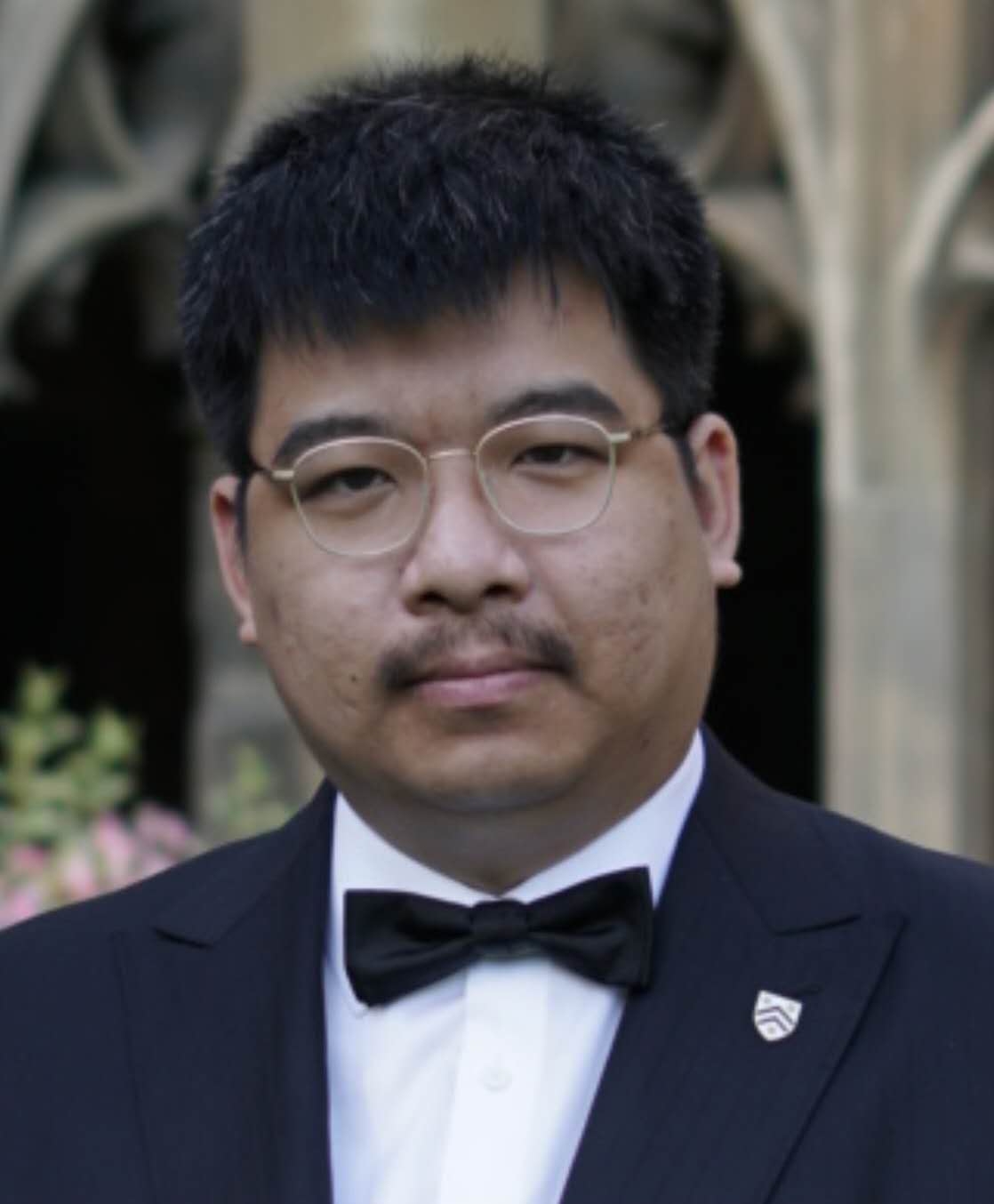
助理教授
Email: zhong _at_ simis.cn
研究领域:理论物理、 超对称理论、弦论
个人简介
我现在担任SIMIS的助理教授。任职之前在牛津大学担任博士后。我的本科,硕士和博士均在伦敦帝国理工学院完成。
我的研究方向是理论物理中的超对称场论及弦理论。其中我特别感兴趣的是超对称规范理论和超共形场论的真空(希格斯真空和库伦真空)。最擅长的理论是3d N=4, 4d N=2, 5d N=1 以及 6d N=(1,0)理论。
在此之外,我最近也对ZX-calculus 有兴趣。这是个能大大简化量子线路图的新工具,有望改变我们对量子纠错码的认识。
教育经历
- 2014.10-2017.6 伦敦帝国理工 本科
- 2017.9-2018.9 伦敦帝国理工 硕士
- 2018.9 – 2022.6 伦敦帝国理工 博士
工作经历
- 2022.9-2025.8 牛津大学 博士后
论著
[1] H.W Kwok, Z.Zhong, “How to simulate magic state cultivation with around 8 Clifford terms on average,” arXiv:[2509.08658]
[2] H.W Kwok, Z.Zhong, “Cutting stabiliser decompositions of magic state cultivation with ZX-calculus,” arXiv: [2509.01224]
[3] W.Harding, N.Mekareeya, Z.Zhong, “Orthosymplectic Quivers: Indices, Hilbert Series, and Generalised Symmetries,” [2505.03875 ]
[4] H.W Kwok, Z.Zhong, “Pauli webs spun by transversal |Y ⟩ state initialisation,” arXiv: [2502.00957]
[5] H.W Kwok, Z.Zhong, “Pauli web of the |Y ⟩ state surface code injection,” arXiv: [2501.15566 ]
[6] C. Lawrie, L. Mansi, M. Sperling and Z. Zhong, “A Pathway to Decay and Fission of Orthosymplectic Quiver Theories,” Phys.Rev.D 112 (2025) 2, 026025
[7] Z. Zhong, “A bound on 3d mirror pairs,” [2411.14531]
[8] Z. Zhong, “An exceptionally simple family of Orthosymplectic 3d N = 4 rank-0 SCFTs,” [2411.12802]
[9] A. Dancer, J. F. Grimminger, Johan Martens and Z. Zhong, “Complex Symplectic Contractions and 3d Mirrors,” JHEP 11 (2024) 116
[10] A. Bourget, M. Sperling and Z. Zhong, “Higgs branch RG flows via decay and fission,” [2401.08757][Phys. Rev. D 109, 126013 ]
[11] A. Bourget, M. Sperling and Z. Zhong, “Decay and Fission of Magnetic Quivers,” [2312.05304 ][Phys. Rev. Lett. 132, 221603]
[12] A. Bourget, J. F. Grimminger, A. Hanany, R. Kalveks, M. Sperling and Z. Zhong, “A Tale of N Cones,” JHEP 09 (2023) 073
[13] S. Nawata, M. Sperling, H.E Wang and Z. Zhong, “ 3d N = 4 mirror symmetry with 1-form symmetry,” SciPost Phys. 15 (2023) 033 .
[14] A. Bourget, J. F. Grimminger, A. Hanany and Z. Zhong, “The Hasse diagram of the moduli space of instantons,” JHEP 08 (2022) 283.
[15] A. Bourget, A. Dancer, J. F. Grimminger, A. Hanany, and Z. Zhong, “Partial implosions and quivers,” JHEP 07 (2022) 049
[16] A. Bourget, J. F. Grimminger, A. Hanany, R. Kalveks and Z. Zhong, “Higgs Branches of U/SU Quivers via Brane Locking,” JHEP 08 (2022) 061.
[17] S. Nawata, M. Sperling, H. E. Wang and Z. Zhong, “Magnetic quivers and line defects – On a duality between 3d N=4 unitary and orthosymplectic quivers,” JHEP 02 (2022) 174.
[18] M. Sperling and Z. Zhong, “Balanced B and D-type orthosymplectic quivers – Magnetic quivers for product theories,” JHEP 04 (2022) 145.
[19] A. Bourget, J. F. Grimminger, A. Hanany, R. Kalveks, M. Sperling and Z. Zhong, “Folding Orthosymplectic Quivers,” [JHEP 12 (2021) 070.
[20] A. Bourget, A. Dancer, J. F. Grimminger, A. Hanany, F. Kirwan and Z. Zhong, “Orthosymplectic implosions,” JHEP 08, 012 (2021)
[21] A. Bourget, J. F. Grimminger, A. Hanany, M. Sperling and Z. Zhong, “Branes, Quivers, and the Affine Grassmannian,” [Adv.Stud.Pure Math. 88 (2023) 331-435].
[22] A. Bourget, S. Giacomelli, J. F. Grimminger, A. Hanany, M. Sperling and Z. Zhong, “S-fold magnetic quivers,” JHEP 02, 054 (2021)
[23] A. Bourget, J. F. Grimminger, A. Hanany, R. Kalveks, M. Sperling and Z. Zhong, “Magnetic Lattices for Orthosymplectic Quivers,” JHEP 12, 092 (2020)
[24] A. Bourget, J. F. Grimminger, A. Hanany, M. Sperling, G. Zafrir and Z. Zhong, “Magnetic quivers for rank 1 theories,” JHEP 09, 189 (2020)
[25] A. Bourget, J. F. Grimminger, A. Hanany, M. Sperling and Z. Zhong, “Magnetic Quivers from Brane Webs with O5 Planes,” JHEP 07, 204 (2020)
[26] A. Bourget, S. Cabrera, J. F. Grimminger, A. Hanany and Z. Zhong, “Brane Webs and Magnetic Quivers for SQCD,” JHEP 03, 176 (2020)
[27] A. Bourget, S. Cabrera, J. F. Grimminger, A. Hanany, M. Sperling, A. Zajac and Z. Zhong, “The Higgs mechanism — Hasse diagrams for symplectic singularities,” JHEP 01, 157 (2020)
[28] S. Cabrera, A. Hanany and Z. Zhong, “Nilpotent orbits and the Coulomb branch of T σ(G) theories: special orthogonal vs orthogonal gauge group factors,” JHEP 11, 079 (2017)
